It’s almost the middle of November and as I write this there has yet to be a frost in my part of the country on the north Hampshire / Surrey border. More than that not only has there not yet been a frost but we have not even been close to one – the bedside digital weather station (which some say gets played with in bed more than the girlfriend…) shows a minimum of 4.9C and a maximum of 19C during the past month and as I look out of the window now it’s overcast with a balmy 14.7C. Where the bloody hell is winter?
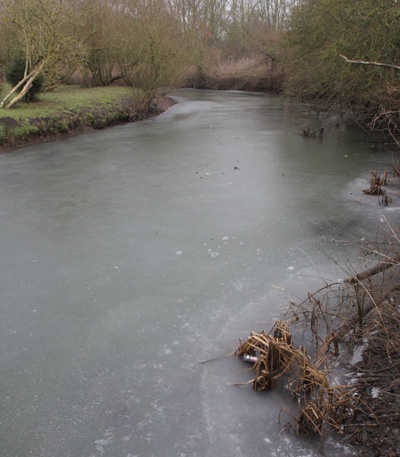
I was out on a November commercial stillwater session with Russ Evans recently, the plan was for me to fish for perch and him to target the roach; two species which typify late autumn and winter fishing on lakes. In the end we gave up on our intended quarry because all I could catch were tench and he was bagging up big time on crucians – tench and crucians in mid November!
My angling mates are all rubbing their hands with glee; “barbel weather!” they say, “time for perch” they say, “Carp still feeding” they say, “had a tench” they bleat, “might still get a Marsh crucian” they opine. So bloody what – who wants crucians, tench or carp at the best of times, let alone in winter and why would anyone really want to catch a warm water barbel when the fish are out of condition and so ridiculously easy to catch?
Summer fishing is for girls; bring on a ‘proper’ winter I say and let’s get back to some ‘proper’ angling.
Instead of 16 June to 14 March I would be quite happy if the coarse fish season were to run from 16 November to 14 March; although given current conditions and the fact that March can be very mild I wouldn’t argue if it were 01 December to 28 February. Indeed, these days I rarely fish at all during the spring, summer and autumn unless it is for work; fishing for ‘pleasure’ starts with the first hard frosts and stops when the rivers close, sometimes a little before.
So what is it about winter?
Firstly it is the landscape. For many the bleak, colourless and stark winter landscape is dour and depressing; for me it is an absolute joy and just as I prefer to be at the seaside in the middle of a winter storm with waves breaking over the harbour walls than I do on a sunny June day so I prefer to be on the riverbank when the trees are skeletons, the banks bare and the scene clothed in that weak and atmospheric winter light.
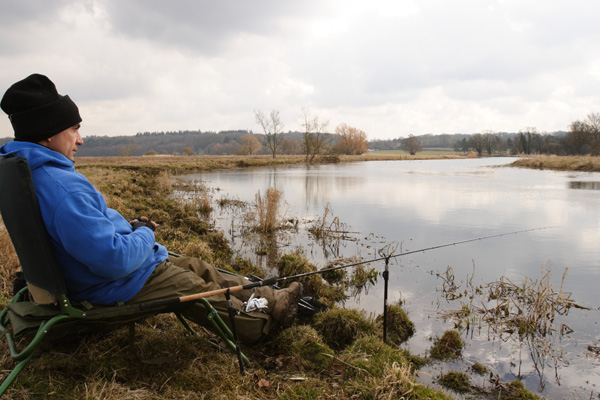
Then it is the presence of anglers; or rather the lack of anglers. The bleak midwinter sees the majority of anglers staying at home not willing to brave the frost, sleet, cold, mud or flood and that means quiet banks, the all too rare opportunity to be able to rove the river and know you will almost certainly be able to get back into a swim you had baited and left. Winter is relatively peaceful even on the more pressured venues and on the less pressured venues I tend to fish winter usually means the joy of perfect solitude.
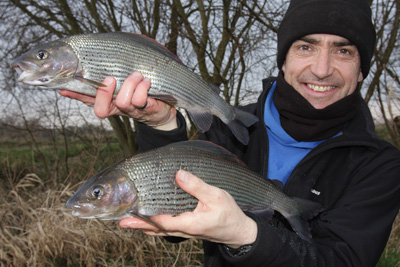 Then, of course, there are the fish. Winter sees most species in the peak of condition, frequently at their heaviest weights and usually clothed in their most colourful winter finery. My favourite species: dace, grayling, chub, barbel, perch and roach all resplendent and on any given day no matter what the conditions (snow-melt floodwater excepted) one, or usually more, of them will be prepared to feed at some point during the day.
Then, of course, there are the fish. Winter sees most species in the peak of condition, frequently at their heaviest weights and usually clothed in their most colourful winter finery. My favourite species: dace, grayling, chub, barbel, perch and roach all resplendent and on any given day no matter what the conditions (snow-melt floodwater excepted) one, or usually more, of them will be prepared to feed at some point during the day.
And, of course, the fishing itself is so much more predictable in winter. Rivers are that much more readable and you can tell within almost a few centimetres exactly where on a crease any chub will be sitting in any given current speed, where the floodwater barbel swims are, which are the glides holding a pod of grayling and where the dace will shoal prior to spawning. Warmer conditions will often have fish scattered like currants in a cake but in the middle of winter it is a case of just one plum in the pudding – all you have to do is pull it out!
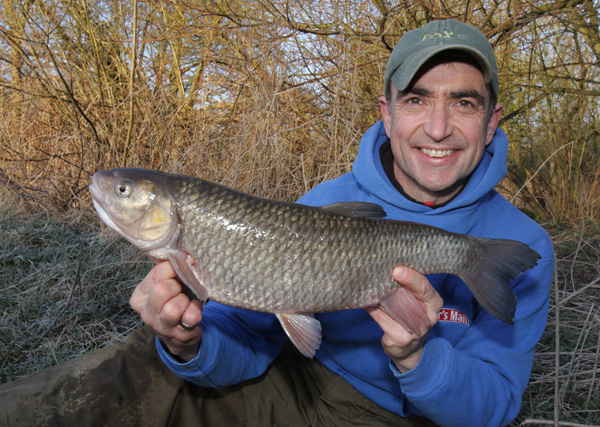
The weather makes the actual catching that bit more predictable too. During the warmer months species such as barbel can feed at any time, in the winter the windows of opportunity are small – but with a basic understanding of air pressure and weather systems – entirely predictable. And given the windows are so small you can time a session to a day when virtually every barbel on an entire river system is having it. Floods make it easier still, the best barbel fishing conditions of them all is that first day you have to wade across the fields to even find the river – better still the fields are dry when you arrive in the morning but you have to wade back through them at night!
Winter feeding times become more predictable for some species – I’m thinking carp here – but for the species I tend to fish for one of the beauties of winter is that in most conditions, you can get a bite any time of day; which means you can pop out for a short session at any time with the reasonably expectancy of a result – something rarely possible at other times of year. In respect of chub and barbel though I’m certain that the worse the conditions are the later they feed and in days gone by I’d often have my one bite of a bitter, sub zero session well into the night. These days I’m not that desperate to catch a fish so I’m always home in bed well before but if there are a few degrees of frost on the ground and you really want to bag a barbel then stick it out.
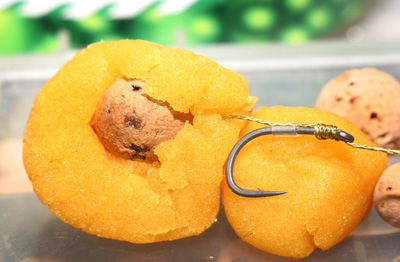 Baits for winter fishing perhaps warrant a mention at this juncture. We all have our preferences of course but for me chub and barbel mean milk proteins, grayling will always take maggot, worm and corn and roach bread or maggot. A one-egg mix of milks, a pint or two of maggots and a loaf and I reckon I you should be able to catch on any river. Oily pellets should, of course, be left at home but not necessarily so with hemp which, contrary to popular belief, is incredibly effective in cold water.
Baits for winter fishing perhaps warrant a mention at this juncture. We all have our preferences of course but for me chub and barbel mean milk proteins, grayling will always take maggot, worm and corn and roach bread or maggot. A one-egg mix of milks, a pint or two of maggots and a loaf and I reckon I you should be able to catch on any river. Oily pellets should, of course, be left at home but not necessarily so with hemp which, contrary to popular belief, is incredibly effective in cold water.
Size of bait is an interesting winter question. I fished a chub session with Adrian Eves a couple of winters’ back when the air temperature did not improve on minus five all day – then dropped off alarmingly at dark… I scaled right down and fished a tiny pinch of flake on light line and a small hook and was amazed to see Ade chucking out a walnut-sized lump of bread on an appropriately matched large hook.
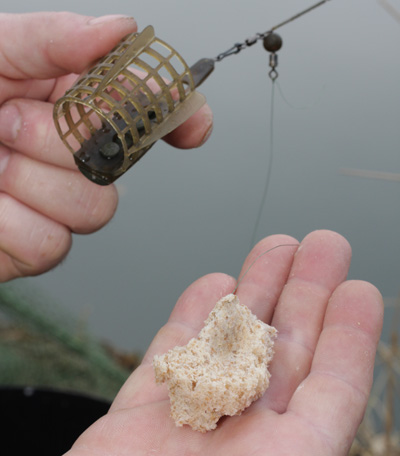 I had reasoned on the ‘clear water, light tackle not that hungry so feed lightly’ scenario whereas Ade was of the ‘if it’s only going to feed once in a day it would surely sooner take a big bait for the same expended effort.’ The result was a draw with both of us having a few chub to around 5lb but it certainly got me thinking. I tend to fish tiny baits for summer chub and barbel but in winter I’m beginning to think big may be better – and certainly easier to fish!
I had reasoned on the ‘clear water, light tackle not that hungry so feed lightly’ scenario whereas Ade was of the ‘if it’s only going to feed once in a day it would surely sooner take a big bait for the same expended effort.’ The result was a draw with both of us having a few chub to around 5lb but it certainly got me thinking. I tend to fish tiny baits for summer chub and barbel but in winter I’m beginning to think big may be better – and certainly easier to fish!
I’m hesitant to suggest more anglers get out on the banks in winter because it will spoil my peace and quiet but it seems to me many fail to do so because they are not properly equipped to do so, especially in terms of clothing. I don’t possess a brolly, let alone a day shelter or bivvy, so my clothes are my only protection when I’m out – so I make sure from head to toe they are the very best; and this is where so many anglers get it wrong I think.
If you want quality protection from extreme cold and extreme wet you have to pay for it. I’m prepared to be corrected if any manufacturer wants to try me but I have yet to find anything distributed by a fishing tackle company which is good enough for anything other than three-season usage. If you want quality kit don’t go to a tackle shop, go to a mountaineering one and get properly layered.
Layering means a base layer next to the skin, a mid layer, then a top waterproof skin.
The primary function of the base is to wick moisture away from your body – Merino wool is excellent. The mid layer is insulation with a lesser degree of wicking and is designed to trap body heat and can be more than one garment – think in terms of a light woollen sweater and a high quality fleece. The top layer keeps out the wind and water and when it comes to keeping out water if it isn’t Gore-Tex then it probably won’t…
Layering on the feet is important too. Forget clumping-great ‘thermal’ wellies and go for a lightweight wicking under sock, a waterproof outer sock (check out SealSkinz) and a top end Gore-Tex walking or mountain boot.
It’s as simple as that and with a hat, neck gaiter and gloves as accessories for around £600 to £750 you will be able to fish effectively and comfortably down to about minus 25 (grayling, possibly chub, but you can forget barbel!).
As I come to the end of this monthly ‘Weigh in’ it’s beautifully dark at 16.30 and yet the temperature outside has only dropped to 12.2C. I’m still in a T-shirt and shorts here at my keyboard, the summer duvet is still on the bed and the central heating is still firmly in the ‘off’ setting.
Oh God, please let it snow…and soon!













